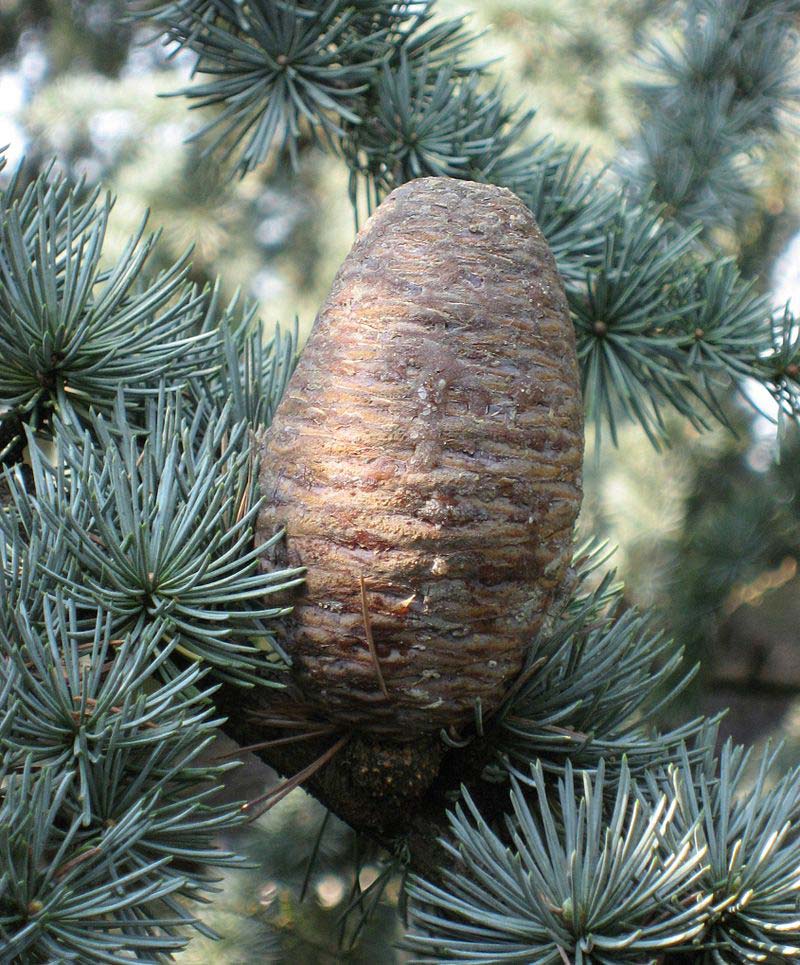
Quick Facts
- Plant Type: Pyramidal with drooping branches
- Foliage type: Evergreen
- Tree height: 50 to 75 feet
- Tree width/spread: 30 to 50 feet
- Hardiness: USDA Zones 6 to 8 and Florida and California
- Flower Color: None
- Sun/light exposure: Full sun
- Water requirements: Tolerates dry conditions
- Seasonal Interest: Year round due to Blue needles and graceful form
Atlas Cedar (Cedrus atlantica var. glauca)
Named after its home, the Atlas Mountains of northwest Africa, Blue Atlas Cedar was first introduced into the United States in 1845. According to Michael Dirr, the leading authority of trees in the United States, it is “in the first rank of needled evergreens.”
In the past Morocco had vast forests of Atlas Cedars, but forests today are much smaller due to human use and fires. In Algeria, the Atlas Cedar has been in massive decline.
The typical wild Atlas Cedar is green, but the blue form arises spontaneously. Those in cultivation usually have a very pronounced silvery blue cast which is considered a variety and is eye-catching in any landscape. They can develop into an exceptional and beautiful specimen tree with an attractive, rugged form when given the space to grow freely. However, it is frequently planted too close to buildings and must be severely trimmed back, moved or removed.
Although native to North Africa, the blue atlas cedar can be successfully grow as far north as sheltered areas of central New England and is more tolerant of dry and hot conditions than most conifers.
They grow slowly with an annual height increase of a foot and can live up to 900 years in ideal locations. Both male and female cones grow on the same tree. The finger-like male cones are up to 3 inches long and are green when young, but turn brown with age. The egg-shaped female cones are only about 2 inches long, purple and are found on the upper branches.
Because the aromatic oil the tree produces is a natural deterrent for insects, wood from this cedar is commonly used in chests and furniture drawers.
The Blue Atlas Cedar on the grounds of the Frederick Law Olmsted Arboretum was planted in 2015 to honor of the late Arnold Quinn, a great friend of the National Museum of American Illustration.

